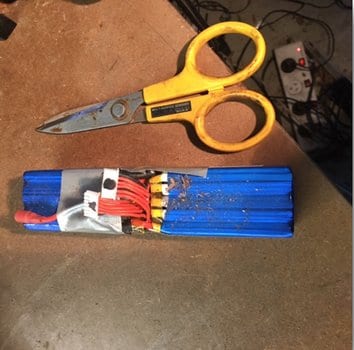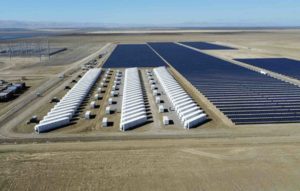Your author recently attended the Australian Energy Storage conference and exhibition held over two days at the Australian Technology Park Sydney. Two full days on batteries (and other forms of storage) what more could an enthusiast ask for.
Despite a lack of specifics from some presenters, the conference with maybe 100-150 attendees at the plenary session was clearly a success and very encouraging. The focus was on how to integrate storage into an increasingly renewable grid and the multiple value streams that storage can and needs to capture. Policy makers need to think hard about storage and the way its been deployed because two things are certain.
- As more and more renewable generation in the system is introduced pool electricity prices are going to get more volatile; This would normally be irrelevant to households but because of innovators like Reposit, there is likely to be a mechanism for households to sell their stored electricity back to the grid if the price is attractive enough. As for “what’s attractive enough”, we do some calculations below.
- Lithium based storage costs are expected to decline by about 20% per year;
- Not only are the costs of the system falling, but installation costs are clearly going to be lower, especially in the “retrofit” market. In this market a house with PV (there are about 1.5 mn households with PV installed) might want to install a battery. In the latest method of doing this, the battery plus the inverter are just plugged into the existing power supply and some “clamp sensors” are attached to the exiting wiring. These sensors simply measure whether electricity is flowing from the house to the grid (in which case the computer chip will likely charge the battery) or from the grid to the house (in which case use the battery unless the battery is being charged). The point is that there is no change to the pre-existing wiring, making the installation cheaper and faster.
What price does a battery need to earn its keep?
We revisit the economics of batteries. The economics are generally measured by comparing the initial capital outlay with the revenue earned over time. The revenue earned for households is usually measured by looking at the avoided costs. The household is assumed to charge its battery from the PV system. Some of the electricity produced in the PV system at DC voltages is lost when its converted to AC, and if it then has to be converted back to DC again to charge the battery there can be further losses. Those losses can range from say 4% to 8%.
There is now a large range of battery systems on the market, and www.solarchoice.com.au has done a good job of putting the database together. Solarchoice and many others have pointed out that not all batteries lithium batteries are of the same quality. The battery management system [BMS] and capacity of the cells compared to the energy and power they have to deliver need to be considered. We have assumed in our comparison that all the batteries can provide 3650 cycles, ie one per day for ten years.
Three batteries are:

The Enphase is more expensive, but with 60MW of advance orders shows that the absolute price of $2250 for “a battery” may be attractive to consumers who want to get a feel for the technology.
Since this is a retrofit analysis and we are assuming there is enough PV on the roof to charge the battery, even after self consumption, then the cost of charging the battery is just the foregone feed in price to the grid offered by your retailer, we assume $0.05 KWh.
The battery is assumed to be used during peak pricing. To take advange of peak pricing your retailer has to actually offer a time of use plan. Time of use plans are not available at all in South Australia, at least not from say AGL, and the difference between the Brisbane and Sydney peak prices is very significant.
This is not necessarily the retailer’s choice, because the retailer is simply reflecting what the networks peak pricing policy is. And this is yet another example of where the network which doesn’t have any customers other than half a dozen retailers, nevertheless basically drives the behavior and economics of the entire value chain.
Also, we have to allow for peak pricing only being available on week days, on weekends the best opportunity is shoulder pricing. So the avoided cost, revenue opportunity for houshelds in Adelaide, Brisbane and Sydney looks as follows:

A battery needs to earn around $160 of revenue per kWh per year to justify its cost
We calculated the revenue that a battery needs to earn over 10 years to achive an internal rate of return [IRR] of 6%. The IRR is the discount rate which makes the time value of the revenue and costs equal. Put more simply it equates to a payback of about 8 years. Because interest rates are low, acceptable paybacks get longer.
The number comes to about $160 per kWh per year real. The justification for using a “real” price is that historically inflation could be expected to drive up grid delivered electricity prices. In fact for the network part of the cost (50%) this is basically locked in.

By comparing the expected revenue in Fig 2 with the required revenue in Fig 3 we can see the usual conclusion its hard to justify storage on purely economic grounds just yet.
But what about selling to the wholesale market!
Most of the good things coming out of the electricity market in Australia are coming from the ACT. The ACT government clearly is so far ahead of the other States in the way it “gets it” as to be no contest.
In the author’s view the State Premiers, particularly of QLD and NSW, ought to be forced to do some of their “compulsory educational hours” that every professional does by attending a course run by ACT environment minister Simon Corbell on how to get renewable energy and energy storage up and running.
One suspects the Prime Minister should also attend. One of the good things coming out of the ACT is Reposit Power. Reposit is interesting because they may have a way for households to play in the wholesale market. That’s a classic arbitrage opportunity.
Without bothering about the likely numerous technical challenge, let’s look at the opportunities. We pick on South Australia in this case because of recent volatility. Figure 4 looks at the 17,000 half hourly spot pool prices in South Australia over the past 12 months sorted from highest price to lowest price:

What this shows is that the vast majority of time South Australian prices are in a “normal” range but 1% of the time prices were negative and 6% of the time prices were over $100 MWh. A household might have a rule, or REPOSIT on their behalf had a trading rule, that they would sell to the wholesale market every time the wholesale price exceeded their own personal revenue opportunity ie $330 MWh (= $0.33 KWh).
There were 94 half hours where this was the case and the revenue earned (ignoring efficiency and line losses and potential other costs) would have been an additional $67 per KWh of storage capacity.
But wait there’s more! Another $4 from negative prices
If a household buys electricity from the grid at a negative price and puts it into the battery (assuming it was empty) this is additional revenue opportunity as the generator is paying your to take their power. There have been 297 half hours in South Australia over the past 12 months with negative prices, so the battery owner’s maximum revenue opportunity from negative prices was another $4. Although there are more negative prices than very high prices, the average negative prices is not that big in absolute $ terms so the revenue opportunity is less.
In summary
In our view efficiency and line losses and regulatory impediments are likely to make it difficult for the household to take advantage of these opportunities. Still, before we consider those difficulties the wholesale opportunity is enough to push the battery owner in South Australia over the IRR threshold. And in our view there is every chance that volatility in the NEM will increase over the next five years, possibly quite substantially.

The potential opportunity in Qld may be larger
One of the points that emerges is that the wholesale revenue opportunities from selling at high prices are at least currently much better than the opportunities from buying at low prices. Its been our view for a while that QLD is the State that’s most likely to see sustained high prices over the next few years as solar generation grows and overall demand also increases.
We show below the frequency and distribution charts for Qld pool prices over the past 12 months and note that there are still two LNG trains to come on line, and still at least one gas generator (Darling Downs) expected to go largely off line.
In QLD there were 79 half hours with the price over $350 in the past 12 months and the revenue available was $79 per KWh of storage per year. I’ll be surprised if that’s not a significantly bigger number over the next two years.

How things have changed in just four years
Four years ago in 2012 I presented “The future energy market” to a 2012 IPART conference. At that time discussion of lithium batteries was in its infancy with Frank Calabria from Origin Energy describing it as “intriguing”, but clearly a left field novelty and no one else taking it seriously. Fig 1 is taken from my 2012 presentation and I can see no inverter cost was allowed for, but no one pointed that out.

Again batterires had been of interest because from racing electric, radio controlled plane I’d seen how lithium polymer batteries had completely displaced nickel metal hydride to the point where the battery shown in the attached photo is capable of putting out 7Kw (more than Tesla powerwall) but only for 30 seconds total in 2-3 second bursts.

At that time I became convinced, and still am, that no one who uses a lithium battery will want to go back to older chemistries. In the consumer market lithium batteries have made enormous strides into the power tool world, to the point where its possible to buy from Bunnings, two or three brands of lithium battery lawn mowers. I use a chain saw, hedge trimmer, vacuum /blower all powered from one battery. For casual home use its perfect. Increasing consumer familiarity with these devices will help to pave the way into household storage. Consumer know what these batteries can and cant do.

David Leitch is principal of ITK. He was formerly a Utility Analyst for leading investment banks over the past 30 years. The views expressed are his own. Please note our new section, Energy Markets, which will include analysis from Leitch on the energy markets and broader energy issues. And also note our live generation widget, and the APVI solar contribution.








